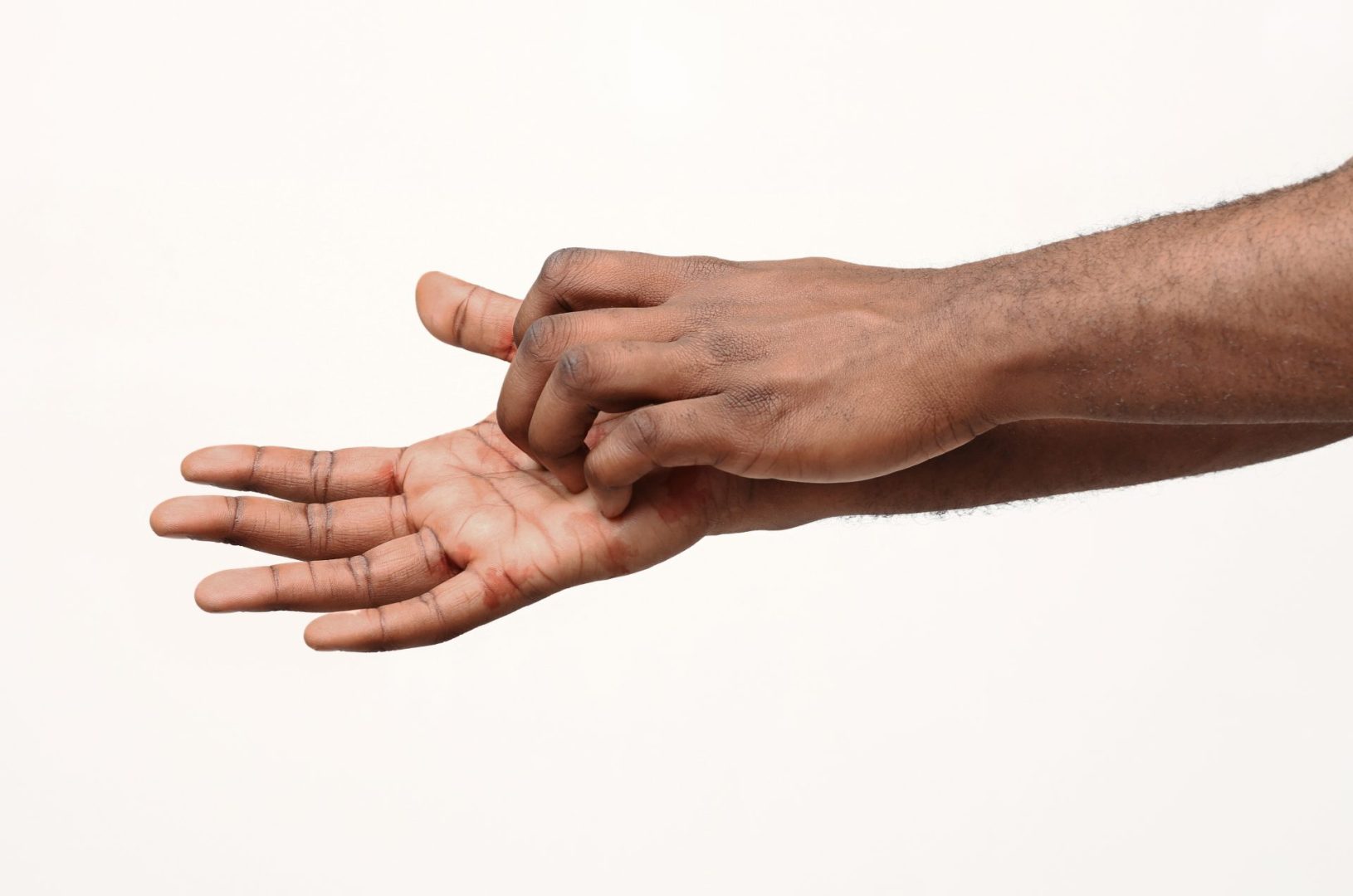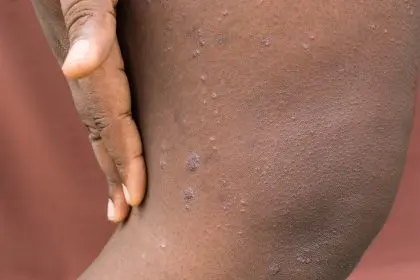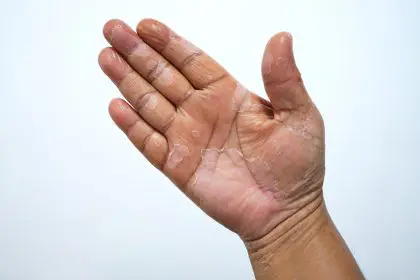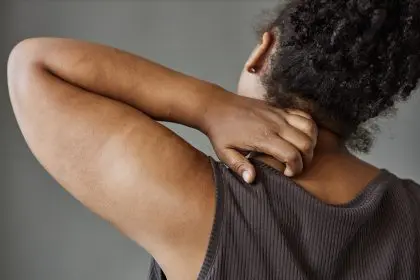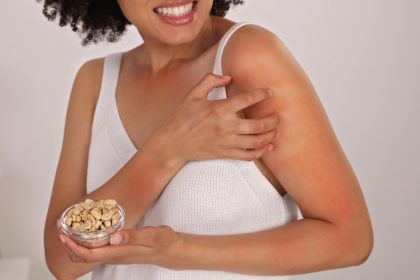That persistent urge to scratch your palms can range from mildly annoying to completely distracting. While many people dismiss palm itching as a minor inconvenience, this common symptom can actually reveal important information about your health and environment.
Palm itching affects millions of people and can stem from surprisingly diverse causes. Some triggers are as simple as dry winter air or overuse of hand sanitizer, while others may signal underlying medical conditions that require attention. Understanding why your palms itch helps you find the right treatment and prevent future episodes.
The skin on your palms differs from other parts of your body, containing more sweat glands and lacking hair follicles. This unique structure makes palm skin particularly susceptible to certain types of irritation and inflammation. When something disrupts the delicate balance of your palm skin, itching often follows as your body’s way of signaling that something needs attention.
Effective treatment depends on identifying the root cause of your palm itching. The following nine causes represent the most common reasons people experience this uncomfortable sensation, along with proven strategies for finding relief.
1. Dry skin wreaks havoc on sensitive palm tissue
Dry skin ranks as the leading cause of palm itching, especially during colder months when indoor heating systems reduce humidity levels. Your palm skin naturally contains fewer oil glands than other body areas, making it more vulnerable to moisture loss and subsequent irritation.
Winter weather creates perfect storm conditions for dry palm skin. Cold outdoor air holds less moisture, while heated indoor environments further strip humidity from the air. This combination draws moisture directly from your skin, leaving your palms feeling tight, rough, and intensely itchy.
Frequent hand washing, while important for hygiene, can also contribute to palm dryness. Hot water and harsh soaps strip away your skin’s natural protective oils, leaving the surface vulnerable to irritation and itching. Hand sanitizers containing high alcohol concentrations create similar effects by dissolving the lipid barrier that keeps moisture locked in your skin.
Air conditioning systems produce effects similar to winter heating, removing humidity from indoor air and contributing to palm dryness year-round. People who work in air-conditioned offices or spend significant time in climate-controlled environments often experience chronic palm itching without realizing the connection.
2. Contact dermatitis turns everyday items into irritants
Contact dermatitis develops when your palm skin reacts to substances it touches regularly. This condition appears in two forms: irritant contact dermatitis from harsh chemicals and allergic contact dermatitis from specific allergens your immune system recognizes as threats.
Irritant contact dermatitis affects people who frequently handle cleaning products, soaps, detergents, or industrial chemicals. These substances damage the skin barrier directly, causing immediate irritation, redness, and itching. Healthcare workers, food service employees, and cleaning professionals face higher risks due to occupational exposures.
Allergic contact dermatitis develops after repeated exposure to specific substances that trigger immune system responses. Common palm allergens include nickel from jewelry or tools, rubber compounds in gloves, fragrances in soaps or lotions, and preservatives in skincare products. This type of reaction can occur days after exposure and may spread beyond the initial contact area.
Latex allergies frequently cause palm itching in people who wear rubber gloves regularly. The proteins in natural rubber latex can trigger both immediate and delayed allergic reactions, ranging from mild itching to severe inflammation and blistering.
3. Eczema creates persistent inflammation and discomfort
Several types of eczema commonly affect the palms, each creating distinct patterns of itching and skin changes. Atopic dermatitis represents the most widespread form, often beginning in childhood and persisting into adulthood with periods of flare-ups and remission.
Dyshidrotic eczema specifically targets the palms and fingers, creating small, intensely itchy blisters that can merge into larger areas of inflammation. This condition often coincides with seasonal allergies or stress periods, suggesting connections between immune system activity and symptom development.
Hand eczema encompasses various inflammatory skin conditions affecting the palms and fingers. This umbrella term includes occupational dermatitis from workplace exposures, constitutional eczema related to genetic predisposition, and mixed forms combining multiple triggers.
Eczema-related palm itching tends to worsen at night when skin temperature rises and distractions decrease. The itch-scratch cycle becomes particularly problematic with eczema, as scratching provides temporary relief but ultimately increases inflammation and prolongs healing time.
4. Fungal infections spread silently between fingers
Fungal infections of the hands, while less common than foot infections, can cause significant palm itching along with other uncomfortable symptoms. These infections thrive in warm, moist environments and can spread from contaminated surfaces or other infected body areas.
Candida yeast infections occasionally affect the palms, particularly in people with compromised immune systems or those who keep their hands wet frequently. These infections create red, itchy patches with distinct borders and may produce a burning sensation alongside the itching.
Dermatophyte fungi, the same organisms that cause athlete’s foot, can infect palm skin through direct contact or self-transmission from infected feet. These infections typically begin between the fingers before spreading to the palms, creating scaly, itchy patches that may crack or peel.
Fungal infections often worsen with moisture and heat, making palm itching more intense after activities like exercising, wearing gloves for extended periods, or working in humid conditions. The itching may intensify at night when hands warm up under blankets.
5. Stress triggers unexpected physical symptoms
Emotional stress and anxiety can manifest as physical symptoms throughout your body, including persistent palm itching. This mind-body connection occurs through stress hormone release that affects immune system function and skin sensitivity.
Cortisol, your body’s primary stress hormone, influences skin barrier function and inflammatory responses. Chronic stress keeps cortisol levels elevated, potentially weakening your skin’s natural defenses and increasing susceptibility to irritation and itching.
Stress-related palm itching often accompanies other anxiety symptoms like rapid heartbeat, muscle tension, or sleep difficulties. The itching may worsen during particularly stressful periods and improve when stress levels decrease.
Nervous habits like excessive hand washing, rubbing, or touching can develop during stressful periods, creating additional irritation that compounds stress-related itching. Breaking these unconscious behaviors helps interrupt the cycle of stress and palm irritation.
6. Liver conditions create surprising skin symptoms
Liver disease can cause palm itching as one of its early symptoms, occurring when bile salts accumulate in your bloodstream instead of being properly processed and eliminated. This type of itching often affects the palms and soles of the feet specifically.
Primary biliary cholangitis, hepatitis, and cirrhosis can all produce palm itching as bile flow becomes impaired. The itching typically worsens at night and may not respond well to typical anti-itch treatments like antihistamines or topical creams.
Pregnancy-related liver conditions, particularly intrahepatic cholestasis of pregnancy, commonly cause severe palm and sole itching. This condition requires medical attention as it can affect both maternal and fetal health.
Liver-related palm itching often occurs without visible skin changes, distinguishing it from other causes that typically produce redness, scaling, or other visible symptoms. The intensity of itching may not correlate with the severity of liver disease.
7. Diabetes affects circulation and nerve function
Diabetes can contribute to palm itching through multiple pathways, including poor circulation, nerve damage, and increased susceptibility to infections. High blood sugar levels over time damage small blood vessels and nerves, affecting skin health and sensation.
Diabetic neuropathy sometimes manifests as itching or burning sensations in the hands and feet. This nerve damage creates abnormal sensations that the brain interprets as itching, even without actual skin irritation.
Poor circulation associated with diabetes reduces the delivery of nutrients and oxygen to skin cells while impairing the removal of waste products. This compromised circulation can contribute to dry, itchy skin that heals slowly from minor injuries.
Diabetes also increases infection risk, making fungal and bacterial skin infections more likely and more persistent. These infections can cause significant palm itching along with other symptoms like redness, swelling, or unusual odors.
8. Thyroid disorders disrupt skin metabolism
Both overactive and underactive thyroid conditions can cause palm itching through their effects on skin metabolism and moisture retention. Thyroid hormones regulate many aspects of skin function, including oil production, cell turnover, and barrier integrity.
Hypothyroidism often causes dry, itchy skin as reduced thyroid hormone levels slow down skin cell production and oil gland activity. This dryness can be particularly noticeable on the palms, which naturally have fewer oil glands than other body areas.
Hyperthyroidism may cause palm itching through increased skin sensitivity and altered immune system function. The accelerated metabolism associated with overactive thyroid can affect skin barrier function and increase susceptibility to irritation.
Thyroid-related palm itching often improves once hormone levels are properly regulated through medication. However, it may take several months for skin symptoms to fully resolve after thyroid treatment begins.
9. Medications and supplements trigger unexpected reactions
Various medications and supplements can cause palm itching as a side effect, either through direct skin irritation or systemic allergic reactions. This type of itching may develop immediately after starting a new medication or gradually over weeks or months of use.
Antibiotics, particularly penicillin and sulfa drugs, commonly cause allergic skin reactions that may include palm itching. These reactions can range from mild itching to severe rashes requiring immediate medical attention.
Blood pressure medications, cholesterol-lowering drugs, and anti-inflammatory medications sometimes produce skin-related side effects including palm itching. The itching may resolve when the medication is discontinued or the dose is adjusted.
Topical medications applied to other body areas can sometimes cause palm itching through transfer during application or through systemic absorption. Always wash hands thoroughly after applying topical treatments unless specifically directed otherwise.
Effective treatments that provide real relief
Successfully treating palm itching requires matching the treatment approach to the underlying cause. Moisturizing works well for dry skin, while antifungal treatments are necessary for fungal infections. Understanding your specific trigger helps you choose the most effective intervention.
Gentle moisturizers without fragrances or dyes provide the foundation for most palm itching treatment plans. Apply moisturizer while your skin is still slightly damp to lock in moisture, and reapply throughout the day as needed.
Cool compresses offer immediate relief for acute itching episodes. Wrap ice packs in thin towels and apply to itchy palms for 10-15 minutes. The cold temperature temporarily numbs nerve endings and reduces the urge to scratch.
Avoiding known triggers prevents future episodes and allows current symptoms to heal. Keep a diary of activities, products used, and foods eaten to identify patterns that might contribute to your palm itching.
When professional help becomes necessary
Persistent palm itching lasting more than two weeks deserves professional evaluation, especially when accompanied by other symptoms like fever, widespread rash, or changes in energy levels. Early intervention often prevents minor issues from becoming chronic problems.
Severe itching that interferes with sleep or daily activities requires prompt medical attention. Prescription treatments like topical steroids or oral medications may be necessary to break the itch-scratch cycle and allow healing.
Signs of infection, including increased redness, warmth, swelling, or pus formation, need immediate medical care. Untreated skin infections can spread and cause serious complications, particularly in people with diabetes or compromised immune systems.
Palm itching accompanied by yellowing skin or eyes, dark urine, or light-colored stools may indicate liver problems requiring urgent medical evaluation. These symptoms together suggest bile accumulation that needs professional treatment.
Creating a comprehensive approach to palm care involves understanding your specific triggers, implementing appropriate treatments, and knowing when to seek professional help. Most cases of palm itching respond well to simple interventions, but persistence and attention to detail are key to achieving lasting relief.

